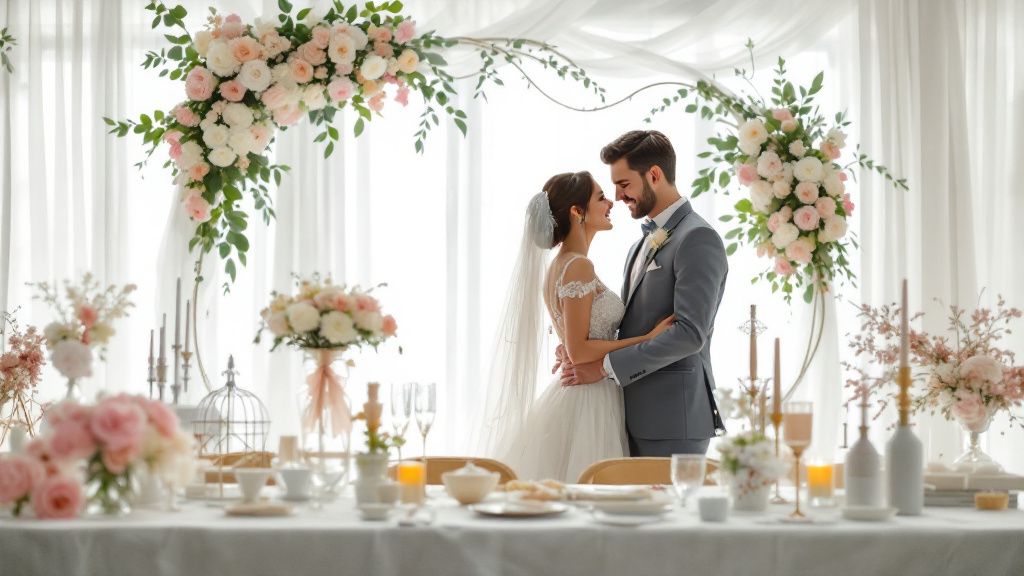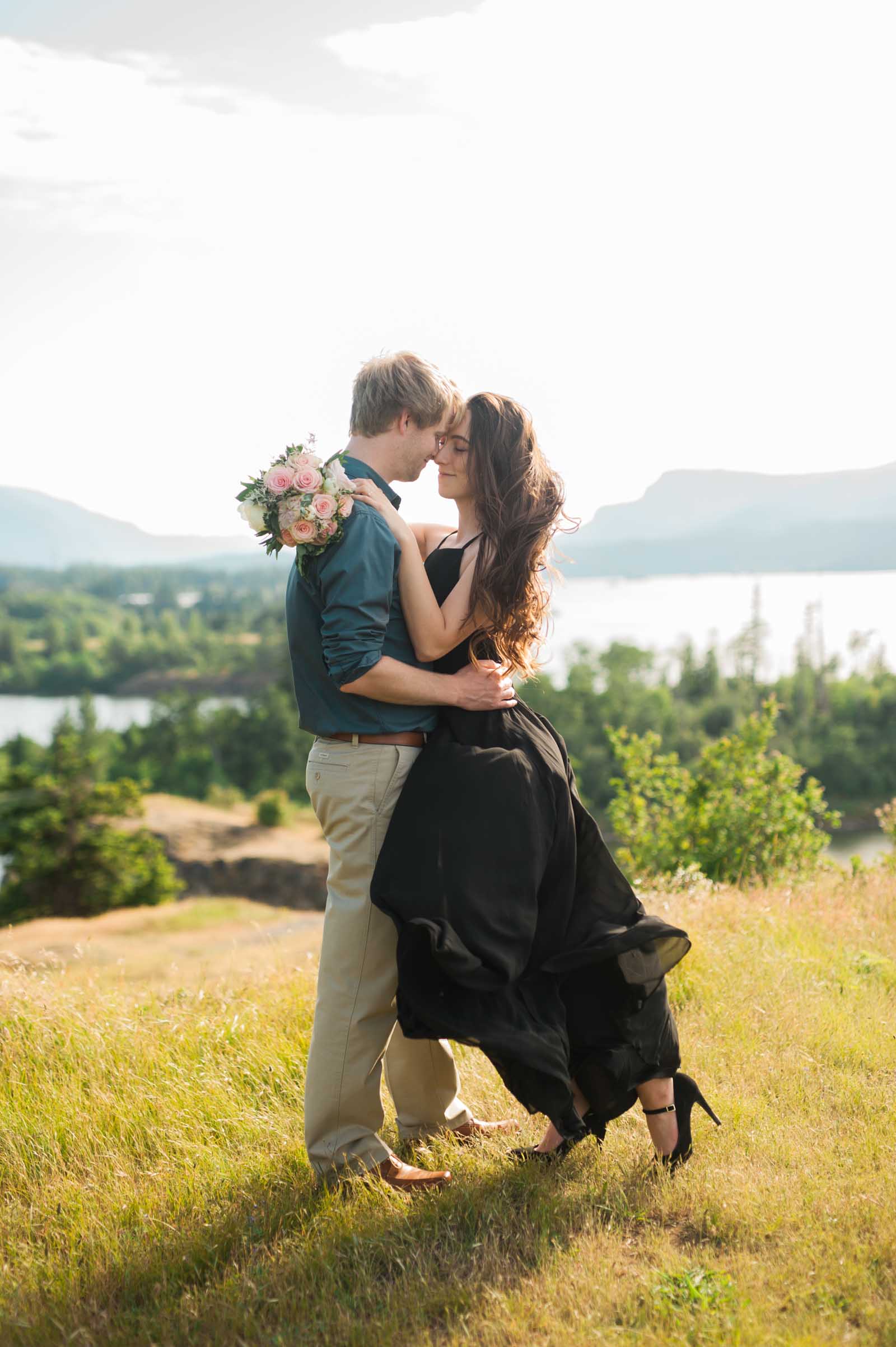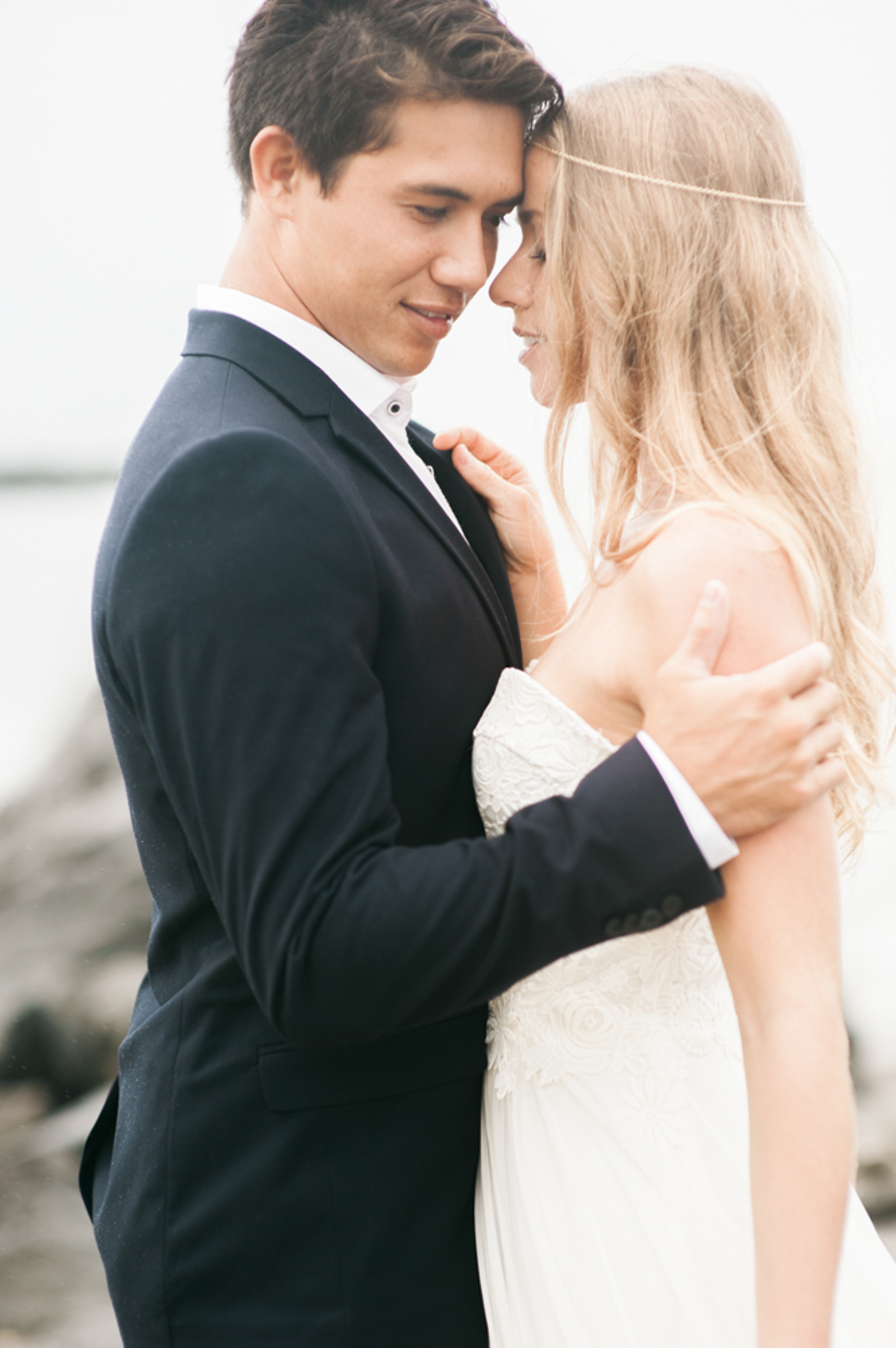In planning the perfect wedding, it’s crucial to identify your unique vision and align it with a clear timeline, unfolding a series of cherished moments. You begin by crafting a comprehensive wedding planning checklist to guide you through each stage with confidence and joy. Essential to this process is a wedding planning timeline, ensuring every decision is made at the right moment, from securing an ideal venue to selecting delightful décor. Engaging reliable wedding vendors early secures quality services and reduces unexpected stress. Prioritize wedding photography to capture timeless memories, allowing you to relive your special day through beautiful images.
Setting Your Wedding Vision
Having a clear vision for your wedding day is vital as it sets the tone for your entire planning process. Begin by visualizing the feel and style that resonates with you and your partner, whether it’s a rustic countryside affair or an elegant ballroom celebration. These initial thoughts will steer many subsequent decisions, from color palettes to invitations, ensuring every element aligns with your shared dream.
Consider creating a mood board or a digital collage of inspiration, capturing ideas from various resources. This visual tool will serve as a valuable guide when you consult with wedding vendors, helping them understand your aesthetic preferences. A vivid vision assists not only in decision-making but also in maintaining a cohesive theme throughout the occasion.
As you shape your wedding vision, don’t overlook the nuances of your location and season. Climate and venue logistics can significantly impact design aspects, like floral arrangements and attire choices. Maintain flexibility to adapt your vision as needed, ensuring it complements the natural setting and unforeseen challenges.
To effectively bring your vision to life, try incorporating a wedding planning checklist into your routine, marking essential tasks aligned with your theme. This checks and balances method ensures you remain focused and organized, streamlining the planning process with confidence.

Budgeting for Your Big Day Wisely
Establishing a realistic budget is crucial to wedding planning, allowing you to enjoy the journey without financial strain. Begin by outlining all potential expenses, including big-ticket items such as the venue, catering, and attire. This comprehensive approach aids in setting clear spending limits. Ensure your wedding planning checklist includes categories for unexpected costs, ensuring you’re prepared for any last-minute adjustments.
Current trends indicate an increasing preference for more intimate and personalized weddings, with many couples choosing to focus their budget on elements that create a unique experience. This pattern is reflected in spending on bespoke décor, personalized favors, and engaging entertainment. By directing funds towards details that truly matter, you create lasting memories that reflect your personality and values.
Implementing strategic cost-saving measures can help balance your budget without sacrificing quality. Consider booking wedding vendors during off-peak seasons or non-traditional days, which often offer reduced rates. Compare multiple quotes to ensure competitive pricing and utilize a wedding planning timeline to track deposits and payments efficiently. These strategies help maintain financial control, allowing you to focus on celebrating the essence of your union.
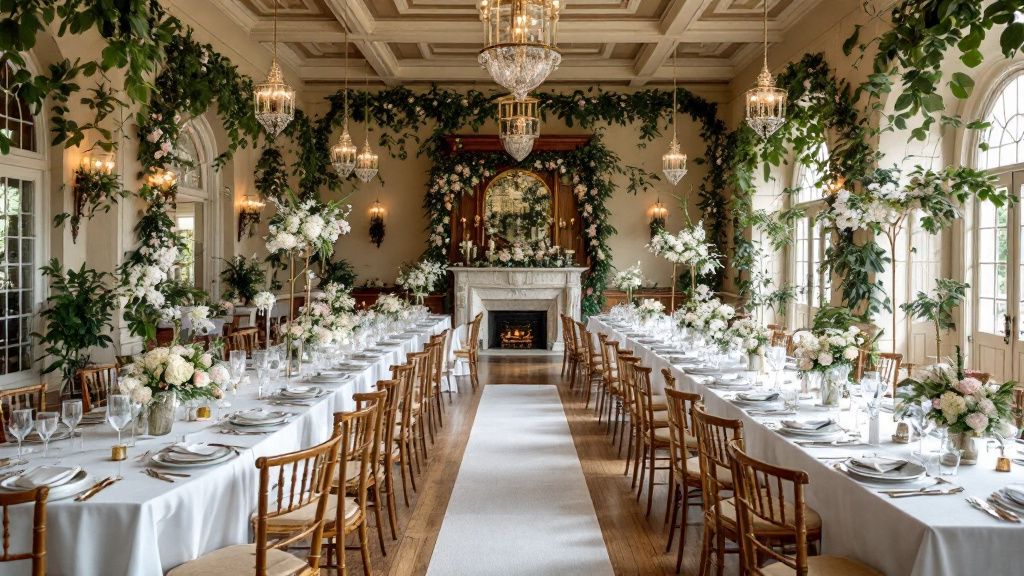
Selecting Your Dream Venue
Finding your dream venue is a pivotal part of wedding planning, as it sets the backdrop for your celebration. Start by considering capacity, location, and style to ensure it aligns with your vision and accommodates your guest list. The venue often influences key elements, like décor and timeline, so factor these into your decisions early in the planning process to maintain cohesion and flow.
On one hand, some view selecting a traditional venue, such as a church or banquet hall, as a timeless choice that offers familiarity and structured services. On the other hand, others argue that unconventional spaces—like barns, art galleries, or outdoor parks—offer a unique atmosphere, providing a personalized touch that can reflect your personality. This choice can creatively enhance your wedding photography, capturing distinctive settings and candid moments.
When narrowing down venue options, it’s beneficial to consult with wedding vendors to understand logistical considerations, such as catering capabilities and technical requirements. A comprehensive wedding planning checklist will aid in evaluating each venue’s pros and cons, ensuring you make an informed decision. Make sure to incorporate venue visits into your wedding planning timeline, allowing sufficient time for thorough comparisons and reflections.
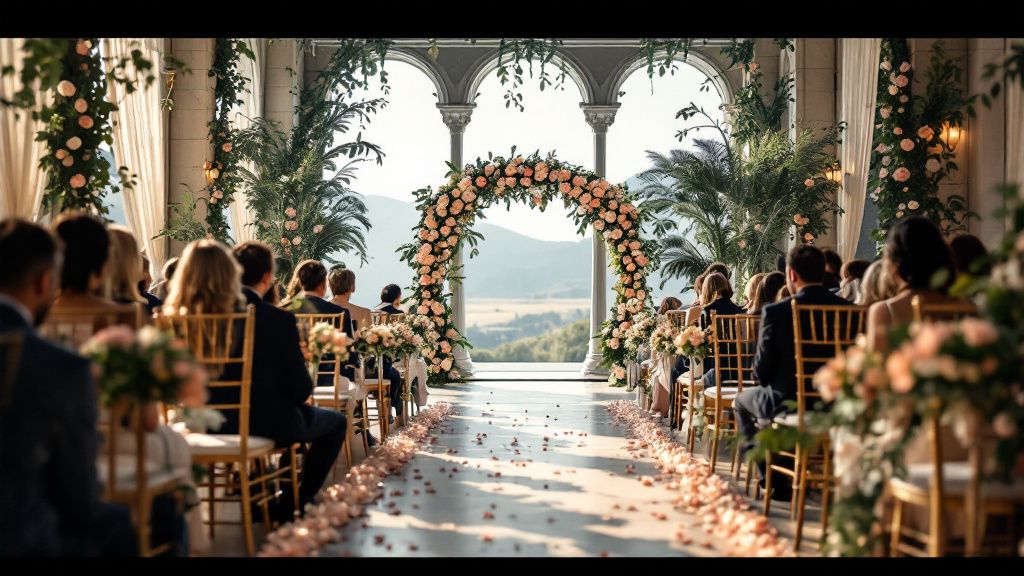
Creating a Memorable Ceremony
Crafting a memorable ceremony involves weaving together meaningful elements that portray your unique love story. Start by choosing a setting that reflects your relationship, whether it’s a sunlit garden or a candlelit chapel, setting the tone for an intimate experience. Consider integrating personal vows or cultural traditions, adding an authentic touch that resonates with you and your guests.
Involve your loved ones by inviting them to participate in the ceremony. This personal engagement not only honors those closest to you but also enriches the emotional depth of the event. From having a family member read a cherished poem to including a loved one in a unity ritual, these gestures forge deeper connections and leave lasting impressions.
Ensure a seamless flow of your ceremony by meticulously mapping out each segment in your wedding planning timeline. Consult with your officiant to review the structure and rehearse if possible. Retaining a detailed wedding planning checklist will help keep track of every detail, from the procession order to musical cues, ensuring your ceremony unfolds effortlessly for a truly memorable day.
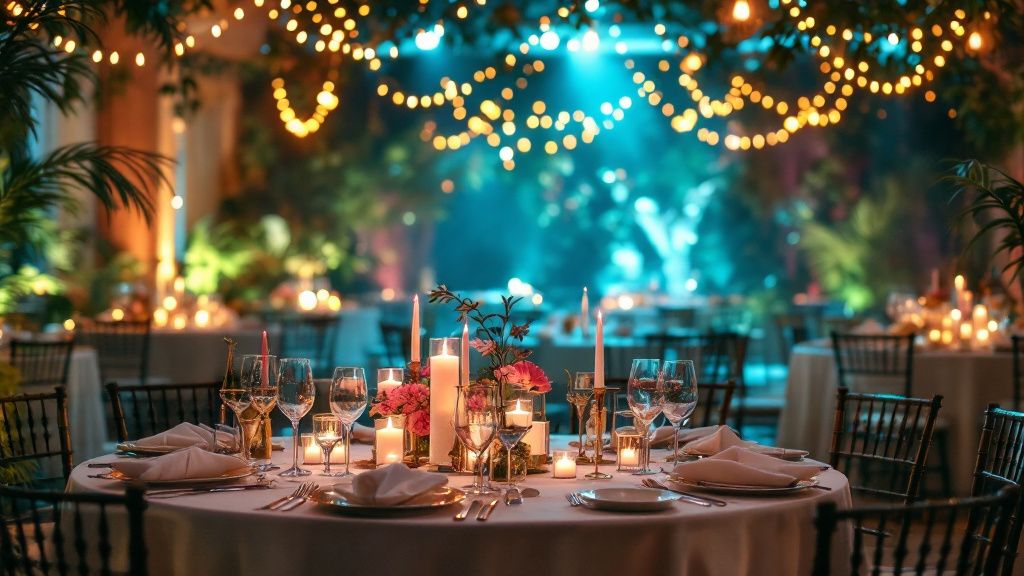
Designing Your Reception Atmosphere
Creating the perfect reception atmosphere involves thoughtful design choices that reflect your distinct style. Begin by selecting a cohesive color scheme and décor theme that echoes the essence of your wedding. Whether you choose a minimalist elegance or a vibrant, eclectic mix, these elements come together to form a visually stunning environment, marrying aesthetics with the emotional warmth shared by your guests.
Lighting plays a critical role in setting the mood. From soft candlelight to dramatic uplighting, the right lighting can enhance the ambience and bring your vision to life. According to recent studies, ambient lighting influences mood and perception, guiding how guests experience and remember the event. Strategic use of light creates a warm, inviting atmosphere that encourages joyful interactions.
Choose your reception layout carefully, ensuring it facilitates movement and interaction. Arrange tables to encourage conversation, ensuring dining and dancing areas are easily accessible. Consulting with experienced wedding vendors will help optimize the use of space, crafting an inviting environment where guests feel comfortable to mingle and celebrate.
Maintain a seamless reception experience by aligning every design element within your wedding planning timeline. Incorporate these details into your wedding planning checklist, enabling you to track all necessary tasks. Communicating with wedding vendors ensures each element is executed flawlessly, contributing to an atmosphere that captures the joy and vibrancy of your celebration.
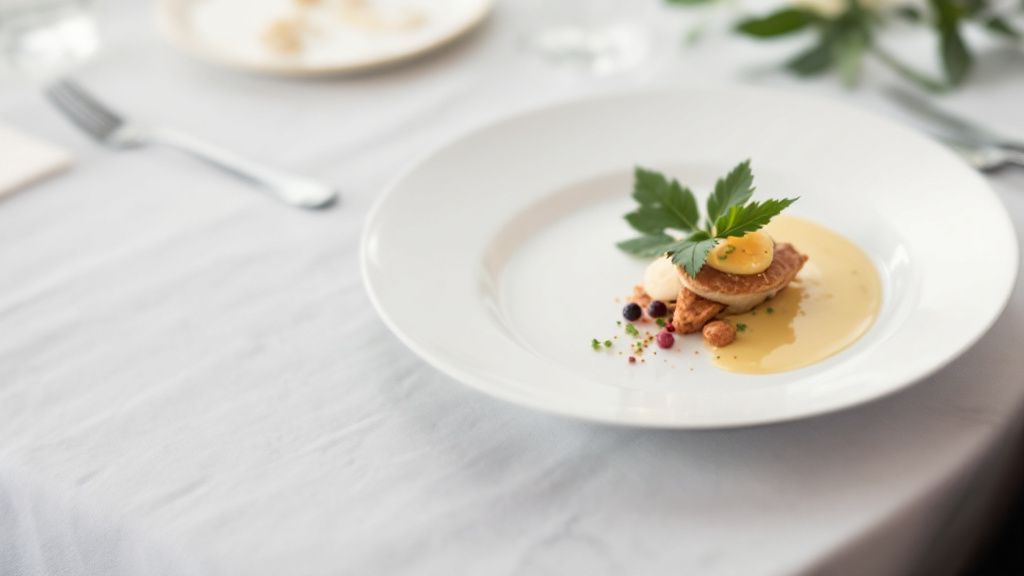
Crafting the Perfect Menu
Designing the perfect wedding menu is about creating a culinary experience that delights and surprises your guests. Begin by selecting a theme or cuisine that resonates with your personal tastes and fits the overall tone of your celebration. A harmonious menu enhances the reception atmosphere, offering a taste journey that complements the emotions of the day and leaves a lasting impression.
To truly appreciate the perfect menu, you need to shift your mindset from merely feeding your guests to crafting an experience that engages the senses and reflects your shared story. This new perspective encourages creativity, allowing you to incorporate unexpected flavors or family recipes that add a personal touch, making the dining experience memorable and unique.
When collaborating with wedding vendors, discuss diverse dietary preferences and potential variations to ensure everyone feels included. Consider offering a variety of options in appetizers, entrees, and desserts, catering to different tastes. An adaptable wedding planning timeline ensures adequate time for tastings and modifications, making certain your menu aligns with your vision and requirements.
Prioritize clear communication with your catering team to ensure a seamless service that aligns with your wedding planning checklist. This organization helps maintain smooth operations, allowing guests to fully enjoy the meticulously planned culinary offerings, while you savor the joy of sharing a meal with your loved ones.
